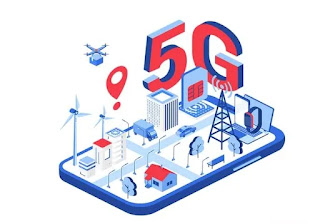How 5G Will Change The Factory Structure
The question of the future of new technologies being added to various industries is coming up again and again. And that is, are these technologies taking the place of workers? Or is it just adding to their work capacity so that they can focus more on urgent matters?
If we look at the factories that have undergone transformation through the use of technology, we can see that the answer, at least so far, is in both cases: "Yes."
Some new tools, such as wearable devices and sensors, are helping workers work more efficiently and securely. Many other devices are also being built to save workers labor and costs. For example, all modern technologies are being developed to operate machines without human help, to make the necessary parts in one day, or to carry heavy machinery, such as engines, from one end of the factory to the other as needed.
The new generation of cellular technology, called 5G, will help propel this wave of technology further. 5G will bring thousands of machines, robots and products under one network. And it will be faster than ever before. Five-G will pave the way for a myriad of technologies that were previously possible on paper and in pen.
The effect of 5G on the factory
Those who have seen how a car's parts are assembled in a factory are at least somewhat familiar with robotics and automation systems. But these technologies are largely dependent on cable connections. As a result of 5G, the devices connected to the network become more 'light' and wireless. As a result, various working processes in industrial plants can be monitored and controlled in a very subtle and precise manner.
In the future, the 5G powered smart factory will be able to send thousands of types of sensors to the cloud on a regular basis. On the other hand, various wireless transmitters will be placed near the factory site or inside the factory. These transmitters are called "small cells", which will improve coverage and signal quality.
This powerful network will help ecosystem managers improve monitoring quality, work faster, respond more quickly to supply fluctuations, and simplify workflows.
Devices used at every stage of production can be connected simultaneously across the 5G connected factory. As a result, if there is a problem with the quality of the product, the system can catch it immediately. Then the defective product can be stopped before it reaches the market. As a result, public safety increases and factory owners can avoid additional costs. At the same time the reputation of the organization remains intact.
Also with the advent of 5G the devices will automatically arrange their own maintenance. If any equipment becomes useless, the waste of time in production system will be reduced, workers will be safer than before and more fuel will be saved.
On the other hand, as it is being said that robotics technology will take the place of technicians, it will not actually harm the professionals. As a result of automation, it is expected that many new jobs will be created. This will also increase the salary of the job and create new opportunities for people to take maximum advantage of their knowledge, experience and artificial intelligence.


Thanks for the nice article!
ReplyDelete